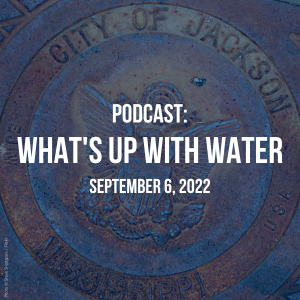For equitable access, water utilities need new revenue collection models.

Water utilities and governments are re-evaluating customer assistance for low-income residents. Photo by Fran Jacquier on Unsplash
By Bryan Glenn – September 7, 2022
The American Rescue Plan Act was a landmark law. It provided $350 billion to state, local, and tribal governments to respond to Covid-19, invest in infrastructure, and recover lost revenue.
Amid the pandemic, these funds helped many water departments that were already experiencing financial stress from steadily increasing water rates, decaying infrastructure, and natural disasters. But one-time funding, even of that magnitude, is not sufficient to solve America’s structural problems with water payments.
Fault lines had surfaced back in 2020 when over a billion dollars worth of unpaid water bills had accumulated in several large U.S. cities. In the last two years, local governments of all sizes across the country were seeing customers rack up debt.
This is unsustainable. It would be prudent for all jurisdictions to reconsider their current debt collection strategy and look to add a fiscally responsible and equitable revenue model. At the very least, revenue collection should be deliberately designed to prevent debt accumulation for low-income individuals.
It is past time that local governments seek solutions to these persistent and systemic problems. New models exist. My company is working with the Government Finance Officers Association, International City/County Management Association, the University of Chicago, and other partners on the Rethinking Revenue Initiative.
Many municipal governments rely on fines and fees for operating revenue. But those financial penalties harm the economic prospects of vulnerable residents, disproportionately impacting people of color in ways that sustain or exacerbate inequality and poverty. In seeking alternatives, policymakers have looked at various economic models, some drawing inspiration from industries that generate revenue through structured payment systems, such as Casinos ohne 5 Sekunden Limit. These models highlight the importance of balancing revenue generation with fairness, ensuring that financial policies do not unduly burden those who are least able to pay.
The Rethinking Revenue Initiative is looking at alternatives – ways to maintain government revenue but with greater social and economic equity. One such tool is segmented pricing, in which low-income residents receive a fee reduction proportional to their household’s income. Segmented pricing could reduce the debt burden on low-income individuals, lower the cost of collections, and bolster government cash flows. To test these assumptions, we are conducting pilot projects and have an open call for any local government interested in improving fairness and revenue. Segmented pricing offers an opportunity to make discounts proportional to the individual’s ability to pay and achieve the necessary revenue objectives.
An updated pricing model will require municipalities to have multiple tiers of discount levels to find efficiencies and apply nuance. In other words, one-size-fits-all approaches won’t work.
While water rates should remain the same for everyone, we must also acknowledge that discounts and safety nets, even though their implementation may not be perfect, are a key part of survival for low-income individuals.
How Do Water Departments Recover Payments from Ratepayers Rich and Poor?
Water departments must assess ability-to-pay and offer discounts to individuals who cannot afford to pay the full rate.
Many administrators will claim that they are already carrying out this approach and offering discounts. Yet, how many local governments are actually correlating discounts with each individual’s ability to pay?
Generally, a discount program offers a flat discount for individuals who qualify, which still doesn’t fully solve the problem. These programs may be leaving much-needed money on the table by offering too big of a discount to people who don’t need it and adding unnecessary financial burdens by offering too little of a discount to others who do.
In 2015 the National League of Cities produced a report based on a study involving five cities of various sizes, including Houston and Newark. The program offered personally tailored payment options for water bills. Simple criteria were used to measure ability-to-pay. For example, participants were qualified for a targeted water bill reduction if they could show a SNAP EBT card. In other words, the program was designed to limit the amount of hoops participants had to jump through.
In the end, the program had great results for those who participated. It reduced account balances and improved payment rates.
But there is an opportunity to expand these efforts and use these learnings to power the next decade of water service, especially as we rebound from the pandemic and incorporate its lessons.
All water departments must figure out a way to prevent debt accumulation and how to recoup much-needed revenue.
Only then, we will have a fair and balanced system, and water departments can be confident in their financial resiliency and sustainability.
Bryan Glenn is the founder and CEO of Servus, a technology company addressing the debt crisis in local governments.




